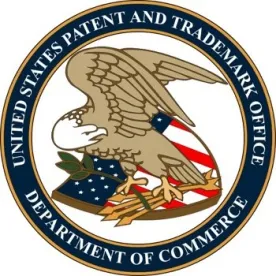In Yeda Research & Development Co., v. Mylan Pharmaceuticals Inc., the Federal Circuit affirmed the decisions of the USPTO Patent Trial and Appeal Board (PTAB) finding three Copaxone patents invalid as obvious in parallel Inter Partes review (IPR) proceedings. The companion decision pertaining to related district court litigation caught my attention for its use of originally confidential statements to FDA as evidence of the state of the art that supported obviousness. This decision caught my attention for its use of a study published three weeks after the priority date as evidence of the motivation and reasonable-expectation-of-success elements of obviousness.
The COPAXONE® Patents At Issue
The Copaxone patents at issue in this case were U.S. Patent Nos. 8,232,250, 8,399,413, and 8,969,302, which are three of the five patents listed in the Orange Book for Copaxone® (glatiramer acetate) 40 mg/ml. The Federal Circuit deemed claim 1 of the ‘250 patent representative:
1. A method of alleviating a symptom of relapsing-remitting multiple sclerosis in a human patient suffering from relapsing-remitting multiple sclerosis or a patient who has experienced a first clinical episode and is determined to be at high risk of developing clinically definite multiple sclerosis comprising administering to the human patient a therapeutically effective regimen of three subcutaneous injections of a 40 mg dose of glatiramer acetate over a period of seven days with at least one day between every subcutaneous injection, the regimen being sufficient to alleviate the symptom of the patient.
Thus, the claimed methods relate to a 3x/week dosing regimen said to be associated with reduced side effects as compared to treatment with Copaxone® 20 mg/ml administered daily.
The Not-Quite Prior Art Reference
The Federal Circuit decision was authored by Judge Reyna and joined by Judges Bryson and Stoll. The Federal Circuit reviewed the asserted prior art, and noted that it included:
- an understanding that the 20 mg/ml dose had not been optimized
- suggestions to explore optimal dosing
- recognition that daily injections were problematic for patients
- studies of alternate daily dosing of 20 mg/ml
- studies of daily dosing of 40 mg/ml (including the “FORTE” study)
- studies of alternate daily dosing of 40 mg/ml*
*This differs from the claimed regimens by one dose over a two week period.
The PTAB decisions also cited Khan 2009, which was published three weeks after the priority date but nevertheless deemed to be relevant to “the state of the art” because it reported a study commenced 2 years earlier.
The abstract of Kahn 2009 stated, “[t]here is considerable interest in studying a more patient friendly dosing regimen of GA that may be as efficacious and better tolerated than daily GA.” The Khan 2009 study compared 20mg GA 2x/week to 20mg GA daily.
Khan 2009 was cited in the IPRs in the reply declaration of Mylan’s expert, in support of his testimony that a person of ordinary skill in the art would have been motivated to explore less frequent dosing regimens than the original daily dosing. As noted in the Federal Circuit decision, the PTAB “found Khan 2009 probative of the fact that POSITAs were motivated to investigate dosing regimens of GA with fewer injections to improve patient compliance.”
The PTAB cited Khan 2009 in support of the following:
[T]he study in Khan 2009 commenced nearly two years before the priority date of the ’250 patent. We, therefore, find that Khan 2009 is probative of the fact that those skilled in the art were motivated to investigate dosing regimens of GA with fewer injections to improve patient compliance.
Numerous prior art references studying less frequent dosing contradict [Patent Owner’s experts] opinion. See, e.g., Ex. 1005 (Pinchasi dosing every other day); Ex. 1008 (Flechter dosing every other day); Ex. 1010 (Khan 2008 dosing every other day), Ex. 1089 (Khan 2009 dosing twice a week). Indeed, all those studies demonstrated that less-than-daily dosing of GA is as effective as daily dosing.
[N]early two years before the priority date of the ’250 patent, Khan 2009 commenced its study on 20 mg GA administered twice-a-week, further evincing that an ordinary artisan would have had a reasonable expectation of success in pursuing a 40 mg, three-times-weekly GA dosing regimen.
Yeda challenged the PTAB’s reliance on Khan 2009, but the Federal Circuit found the first use proper, the second “a simple oversight, constituting harmless error,” and the third use to be possibly erroneous but nevertheless harmless:
To the extent that this reliance was error, we conclude that it was harmless error. Khan 2009 was the last piece of evidence in a lengthy analysis which the Board also relied on Flechter, Khan 2008, Caon, Pinchasi, and testimony from Dr. Green in finding a POSITA would have had a reasonable expectation of success in the claimed regimen. Even if the Board’s reliance on Khan 2009 was improper, it is harmless error because substantial evidence otherwise supports the Board’s conclusion.
Why didn’t the court expressly find the third use—evidence of a reasonable expectation of success—improper?
Given that the PTAB also discussed the results of the Khan 2009 study and the reported conclusion “that GA administered less frequently than daily may be as efficacious and better tolerated than GA administered daily,” I have less confidence than the Federal Circuit that its use was cabined to the limited purpose of showing what persons of ordinary skill in the art understood before the priority date, e.g., when the Khan 2009 study was commenced.




 />i
/>i
